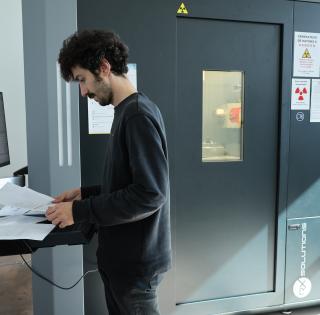
The ARCAD team’s purpose: application objectives
- high performances
- low energy consumption
- high security (resistance to attacks) and reliability (resistance to faults)
- low cost (small area and flexibility by reconfiguration)
Research areas concerning hardware architectures
- analog/digital functions, computation units, IP blocks
- accelerators, special purpose processors
- reconfigurable architectures: CGRA, special purpose, virtual
- parallel architectures
- secure architectures, protection against logical and physical attacks
Research areas concerning software support and tools
- special purpose CAD tools: synthesis, P&R, operator/circuit generation
- high-level synthesis
- low-level libraries for our architectures
Multidisciplinary expertise in digital, electronic and computer systems
- Embedded systems
- Cybersecurity
- Embedded software
- Hardware accelerators/FPGAs
- Co-design
- Processors
- Compilation
- Algorithm-architecture matching
- Prototyping
The world is growing increasingly connected today, and industry is no exception.
Factories are becoming equipped with ever more connected objects (sensors, actuators, etc.) which provide real-time monitoring of the proper operation of production machinery. The data that these objects collect is then sent to a hardware device known as a gateway, which can analyze this data and detect any anomalies. The whole of this system makes it possible to carry out predictive maintenance. Communication between this gateway and the objects is vulnerable, however. For the data is transferred between remote-controlled objects and the gateway via wireless networks (Wi-Fi, Bluetooth), which can be subject to cyberattacks.
Innovative technologies
The national TrustGW project was launched in 2021 to ensure the secure operation of a factory. It brings ENSTA Bretagne together alongside Université Bretagne Sud, Irisa Rennes and IETR Rennes.
Its goal? Implement a cybersecurity solution to protect data when it is being collected by the connected object, transferred to the gateway and analyzed.
“The project is original in that it entails development of a reconfigurable gateway capable of swiftly processing very large datasets from several sensors using different wireless networks (Wi-Fi, Bluetooth, etc.),” explains Pascal Cotret, lecturer at Lab-STICC, in charge of developing a prototype for industry. With that in mind, the researchers are particularly using FPGA electronic components for the rapid execution of cryptographic and hashing algorithms for securing data on RISC-V open-source processors.
They are also less vulnerable to cyberattacks as they can be reprogrammed over time. “To make gateway datasets more secure, we partition them depending on their characteristics, separating out the data depending on whether it comes from Wi-Fi- or Bluetooth-connected objects.”
A number of industrial players are already showing an interest in the technology developed through the TrustGW project, for the purposes of upgrading existing industrial facilities or installing new protected networks within their future factories.
- Research program name: "Protection against intellectual property theft in electronics: code obfuscation techniques for HLS synthesis chains in SaaS mode"
- began at the end of 2017
- financed by the Brittany region
- led by Jean-Christophe Le Lann (research professor)
- partner: Politechnico di Milano (public scientific-technological university which trains engineers, architects and industrial designers, based in Milan)
- thesis by Hannah Boenning Badier, defended in 2021
The PhD student and team explored various promising avenues in terms of obfuscation (security through obscurity), which involves incorporating a discreet "tattoo" into a computer code using artificial intelligence techniques.
Trojan horses were also designed as part of this project in a bid to more clearly understand the implications of such hardware threats and to consider countermeasures at the time of design.
Jean-Christophe Le Lann: "This original project is set to continue with support from the Cyber Center of Excellence. It is of interest to the French Defense, Procurement and Technology Agency (DGA) and will be the subject of a second thesis beginning in 2022."





















